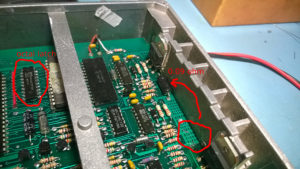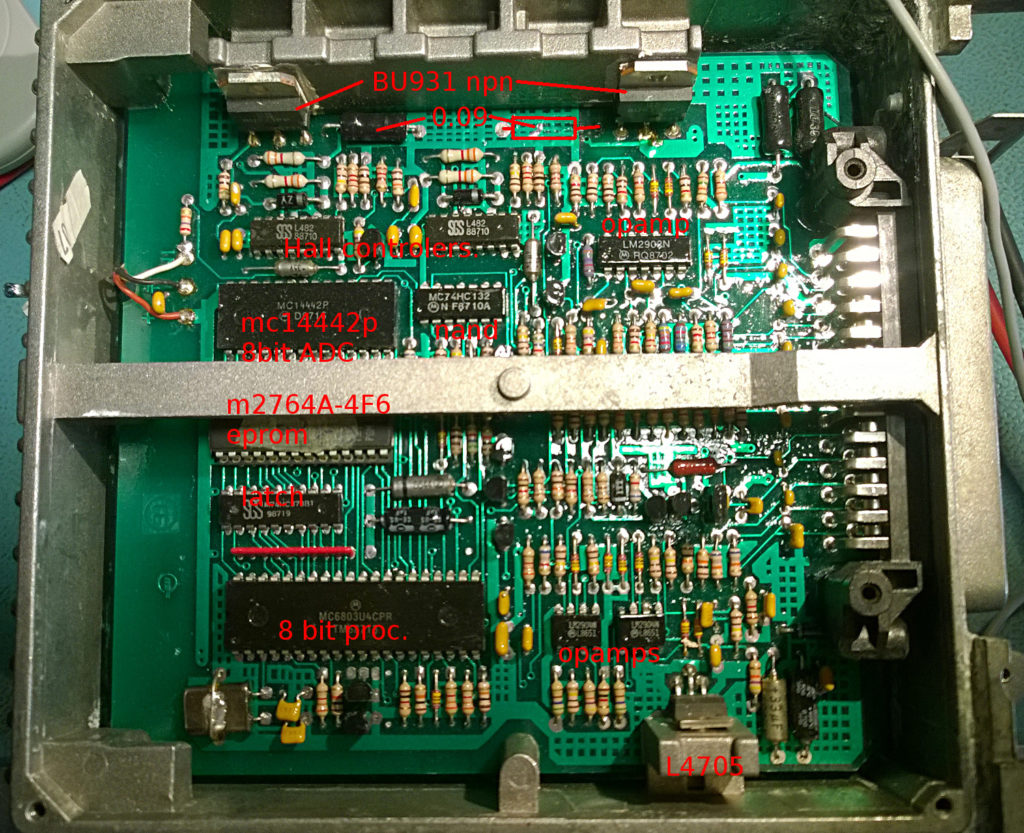Maserati Biturbo ignition ECU
This is the ignition controller from an 80’s Maserati 430 Biturbo. Not something you see every day. Someone else tried to fix it but gave up. The problem according him was a burned resistor and transistor. He removed the resistor with some pcb damage and desoldered partly the transistor. The via was still on the desoldered resistor leg. The resistor was a 0,09 ohm and I think somewhere between 2 to 5W. Not a value that is easy to find, but I found a 5W 0,1 ohm that measured 0,09 ohm. Because the original via was gone and the resistor longer I made a new hole and soldered the leg on both sides to the pcb. Besides that I also made a new connection instead of the original via. Just to be sure. The original “dead” one was a bit roasted but still OK. So this was not the problem. Also the 2 darlingtons were OK. Tested them on my curvetracer to be sure. The transistors are not parallel or in serie. Each one drives it’s own ignition coil.
The problem was a dead voltage regulator. An ultra lowdrop 5V automotive version. Some of the electronics had a 6V max. The rest of the damage was less as I expected. I was a bit afraid the eprom was damaged. But it tested Ok and I copied the code for safety. The eprom was probably protected by a 74HC373 octal latch that turned out to be dead. So he died not for nothing, RIP little chip.
After checking and correcting bad solder joints and with a temporary 5V regulator it went back to the owner to check. And it worked. In the mean time the right regulator was delivered and I swapped it for the temporary 7805.
The unit has a microcontroller with an eprom and latch. They control the L482 Hall effect pickup ignition controllers. The latter each control a darlingtons that switches an ignition coil. There is a vacuum switch (I think) in the cabinet that connects to the 3 wires on the left. For the rest some opamps and a few nand gates. There is a conformal coating over de board.


